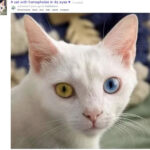Siberian cats, hailing from the frosty landscapes of Russia, are admired globally for their striking beauty and captivating personalities. A key feature that often sparks curiosity among cat enthusiasts is their size. These majestic felines are indeed generously proportioned, leading some to wonder just how large they truly get.
Despite their impressive lion-like ruff and confident bearing, Siberian cats are known for their affectionate and cuddly nature, often likened to teddy bears. Their amiable and loving temperament makes them excellent companions for families and individuals alike.
Frequently grouped with other large breeds like Maine Coons, Norwegian Forest Cats, Bengals, and Ragdolls, Siberian cats certainly hold their own in terms of size. But how exactly do they measure up against these breeds and the average domestic cat? What are the specific size differences?
Untamed delves into the specifics of Siberian Cat Size, offering a comprehensive comparison with other breeds and providing essential care tips to ensure your Siberian companion thrives into a healthy and happy adult.
Siberian Cat Size Compared to Regular Domestic Cats
Siberian cats exhibit distinct physical characteristics that set them apart from typical domestic cats. Their backs possess a subtle arch, positioned higher than their shoulders, and their hind legs are slightly longer than their front legs. This unique build contributes to their agility and powerful jumping ability.
Beyond these structural differences, Siberian cats are notably larger than the average house cat. Let’s examine the key size metrics:
| Feature | Siberian Cat | Regular Domestic Cat |
|---|---|---|
| Weight | Up to 17 lbs (7.5 kg) | Around 10 lbs (4.5 kg) |
| Length | 17–25 inches (43–63.5 cm) | 16–18 inches (40–46 cm) |
| Height | 9–11 inches (23–28 cm) | 8–10 inches (20–25 cm) |
Siberian Cat Size: A Breed-by-Breed Comparison
While Siberian cats are undoubtedly larger than standard domestic cats, understanding their size in relation to other popular breeds provides a clearer picture of their stature. Below is a comparative size overview of several well-known cat breeds:
| Breed | Weight | Length (Nose to Tail Tip) | Height |
|---|---|---|---|
| Siberian Cat | – Male: 11–17 lbs (5–7.5 kg) – Female: 9–11 lbs (4–5 kg) | 17–25 inches (43–63.5 cm) | 9–11 inches (23–28 cm) |
| Maine Coon | – Male: 15–25 lbs (6.9–11.4 kg) – Female: 8–14 lbs (3.8–6.2 kg) | 19–39 inches (48–100 cm) | 12–16 inches (30.5–40.5 cm) |
| Norwegian Forest Cat | – Male: 10–20 lbs (4.5–9 kg) – Female: 8–18 lbs (3.6–8 kg) | 12–18 inches (30.5–45.5 cm) | 9–12 inches (23–30.5 cm) |
| Ragdoll | – Male: 8–20 lbs (3.5–9 kg) – Female: 8–15 lbs (3.5–7 kg) | 17–21 inches (43–53 cm) | 9–11 inches (23–28 cm) |
| Bengal | – Male: 10–15 lbs (4.5–6.8 kg) – Female: 8–10 lbs (3.5–4.5 kg) | 14–18 inches (36–46 cm) | 8–10 inches (20–25 cm) |
Maine Coon vs Siberian Cat: Spotting the Differences
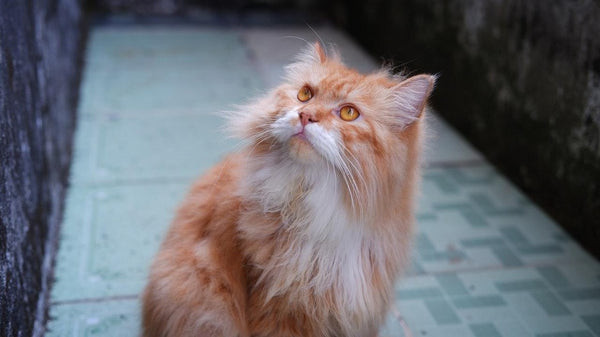
Siberian cat versus Maine Coon comparison. Close up of a fluffy ginger and white cat looking upwards.
Source: Phan Võ Minh Kỳ
At a distance, Maine Coons and Siberian cats can easily be mistaken for one another. They share similarities in fur length and often sport lynx-like tufts on their ear tips. Both breeds are robustly built, strong, and possess medium-length legs. However, their similarities largely end there.
Maine Coons, recognized as the largest domesticated cat breed, are significantly bigger than Siberian cats. Maine Coons also boast broader chests and tails that can be as long as, or even longer than, their bodies. In contrast, Siberians tend to have a more barrel-shaped body and a shorter tail.
Head shape is another key differentiator. Maine Coons have a distinctive square-shaped head with prominent, high cheekbones, making them instantly recognizable. Siberians, on the other hand, have rounder facial features, more akin to typical domestic cats.
In terms of temperament, both breeds excel as companions. They are known for being affectionate, sociable, and playful, making them wonderful additions to any home.
Norwegian Forest Cat vs Siberian Cat: Size Matters
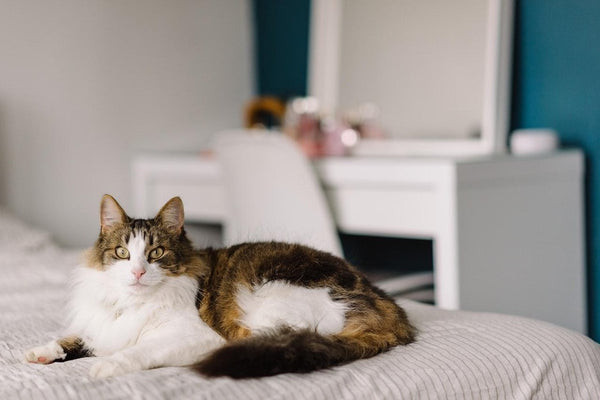
Norwegian Forest Cat and Siberian cat distinction. A fluffy grey and white cat sits on a white bed looking to the side.
Source: Anete Lusina
The Norwegian Forest Cat, or “Wegie,” is another breed often compared to the Siberian. Both share equally endearing and friendly personalities. However, size is a notable difference. Norwegian Forest Cats are generally larger than Siberian cats, although exceptionally large Siberians can approach the size of smaller Wegies.
Body type also distinguishes these breeds. Norwegian Forest Cats have a shorter body with a higher rear and a triangular head shape, contrasting with the Siberian’s rounded body and head.
Ragdoll vs Siberian Cat: Distinct Features

Ragdoll cat versus Siberian cat comparison. Close up of a white and cream Ragdoll cat with blue eyes looking directly at the camera.
Source: Duncan Wasieczko
Ragdolls are another breed that may initially resemble Siberians. However, closer inspection reveals clear differences. Ragdolls have the potential to grow even larger than Siberian cats.
Ragdolls are also easily identified by their striking colorpoint patterns and captivating blue eyes, although it’s worth noting that a specific Siberian color variation shares these characteristics.
Personality-wise, both breeds are exceptionally affectionate. The main distinction lies in their activity levels. Siberians are typically more active and playful, while Ragdolls are known for their relaxed and calm demeanor. This difference in energy also extends to grooming needs, with Ragdolls requiring more maintenance than Siberians.
Bengal vs Siberian Cat: Contrasting Builds
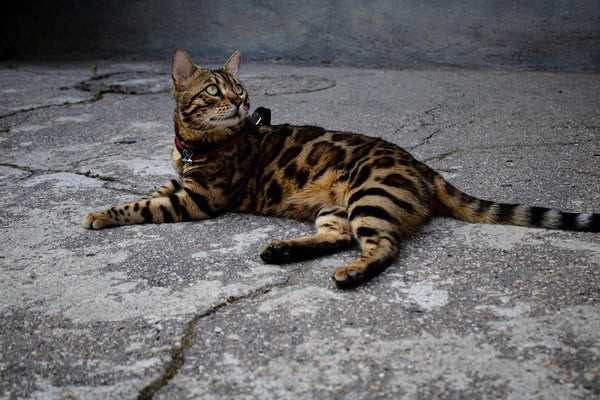
Bengal cat and Siberian cat compared. A Bengal cat stands amongst long haired cats looking alert and different.
Source: Florin G Daniel
Siberians and Bengals share a few traits, such as high energy, playfulness, and an affinity for water. However, their physical builds differ significantly, despite both breeds being muscular and athletic. Bengals are characterized by their lean and elongated bodies, while Siberians are stockier and more robust. In terms of overall size, they are quite comparable.
Factors Influencing Siberian Cat Size
The ultimate size your Siberian cat reaches is influenced by several key factors:
- Genetics
- Sterilization Status
- Diet
The Role of Genetics in Cat Size
Genetics are paramount in determining your Siberian cat’s size, and this is a factor beyond your control. If your Siberian kitten comes from a lineage of large cats, they are more likely to grow to be substantial in size as well.
While genetics dictates a cat’s potential height and length, you can significantly influence their weight and growth rate through proper care. It’s crucial to avoid overfeeding your Siberian in an attempt to make them larger. This practice is more likely to lead to obesity, a prevalent issue in domestic cats, which can trigger serious health conditions such as:
- Diabetes
- Heart Disease
- Joint Degeneration
Sterilization and its Impact on Size

Sterilized Siberian cat size impact. A fluffy white and ginger cat lies on a red blanket looking relaxed.
Source: Ivan Babydov
Siberian cats that are spayed or neutered tend to grow larger than their intact counterparts. The earlier the sterilization procedure is performed, the more pronounced this effect may be.
A common challenge with sterilization is the increased tendency for weight gain in cats, particularly those living primarily indoors. Fortunately, Siberians are slow to mature, often continuing to grow until they reach four or five years of age. Their prolonged kitten-like activity levels can make managing their weight easier.
Diet’s Effect on Siberian Growth
While you cannot alter your Siberian cat’s inherent height and length, you have considerable control over their weight and overall physique through diet.
The quality and quantity of food, as well as feeding frequency, play a crucial role in your cat’s weight. Generally, higher quality cat food allows for smaller portion sizes while still effectively maintaining a healthy weight.
Optimal Diet for Siberian Cats

Siberian cat diet example. Untamed cat food displayed showing meat based pate in a grey bowl.
Image (c) Untamed
A Siberian cat’s diet should mirror their natural ancestral diet, consisting of the same nutrients they would obtain in the wild. In their natural environment, cats are predators of small prey animals.
As obligate carnivores, cats require a diet that is predominantly animal protein, regardless of whether you choose dry, wet, semi-moist, raw, or homemade cat food. Meat and fish are the primary energy sources for cats, providing essential amino acids like taurine and arginine, as well as vital vitamins and minerals for maintaining optimal health.
The ideal composition of cat food should be:
| Nutrient Group | Ideal Percentage |
|---|---|
| Animal Protein | Over 50% |
| Animal Fat | Up to 20% |
| Carbohydrates | Less than 3% |
Excellent ingredients for healthy Siberian cat meals include:
- Chicken (cooked, not raw)
- Turkey
- Duck
- Salmon
- Sardines
- Prawns
- Mackerel
- Tuna
- Liver
Pork, ham, and bacon can be used sparingly as natural flavor enhancers due to their higher fat content. Fish and seafood are beneficial sources of healthy fatty acids, crucial for a robust immune system, cell integrity, and healthy skin and coat. Incorporating fish into your cat’s diet a few times a week is recommended.
Always scrutinize the ingredient list of any commercial cat food. Avoid products that contain vegetables, grains, or fruits, as these are not biologically appropriate for a cat’s digestive system.
Plant-based protein sources to avoid include:
The Problem with Excessive Carbohydrates
High-carbohydrate cat food can contribute to:
Untamed Cat Food for Siberian Cats
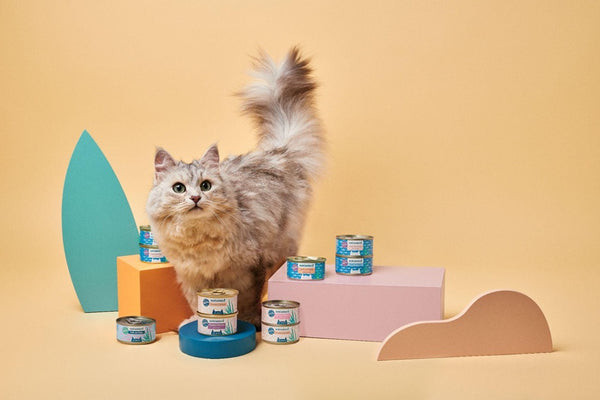
Untamed cat food recommendation for Siberian cats. A ginger cat sits next to a selection of Untamed cat food cans.
Image (c) Untamed
Untamed provides an excellent dietary solution to prevent your Siberian cat from becoming overweight or lethargic.
Our cat food recipes are carefully formulated to deliver all the necessary nutrients for a long and vibrant life.
All Untamed recipes, available in both jelly and gravy formats, feature:
- High quantities of animal protein
- Veterinarian-designed formulas
- Ethical sourcing and production
High Animal Protein Content
Untamed cat food is formulated without grains, sugar, vegetables, eggs, artificial colors, flavor enhancers, or other harmful additives. We prioritize using premium, whole meat and fish, supplemented with a small amount of animal fat.
Even the most discerning eaters, who may have previously rejected wet food, will find Untamed’s enticing aroma and taste irresistible.
Vet-Formulated Recipes
Untamed collaborates with veterinarians to ensure our recipes achieve an ideal protein-to-fat ratio and are suitable for cats of all life stages (kittens, adults, and seniors, neutered or intact). Our formulas are also designed to support the prevention and management of common feline health issues.
Ethical Production and Sourcing
Untamed is dedicated to environmental sustainability and feline well-being. We uphold these values by:
- Partnering exclusively with cruelty-free and sustainable suppliers.
- Utilizing 100% recyclable packaging.
- Ensuring carbon-neutral production and logistics.
Want your Siberian cat to grow strong and healthy without becoming overweight? Order Untamed and witness your feline flourish!
Ordering Untamed for Your Siberian Cat

Ordering Untamed cat food online. A delivery box of Untamed cat food being delivered to a doorstep.
Image (c) Untamed
Ordering premium cat food online has never been easier! To receive an Untamed starter pack, simply:
- Share details about your Siberian cat.
- Create a customized meal plan to suit your cat’s individual needs and preferences.
- Complete your order.
For ultimate convenience, you can opt for our monthly subscription service, ensuring you never run out of your Siberian’s favorite Untamed meals!
Cat parents who have transitioned their felines to Untamed have reported remarkable positive changes. Here’s a timeline of the observed benefits:
| Timeline | Observed Results |
|---|---|
| Within a Week | Improved mood, Easy digestion |
| Within Two Months | Increased muscle tone, Healthy eating habits |
| Within Four Months | Shinier, softer fur, Reduced shedding and hairballs |
| Long-Term | Sustained energy levels, Healthy weight management, Enhanced overall health |
Are Siberian Cats Suitable Pets?
Size is only one aspect to consider when choosing a feline companion. If you are considering adopting a Siberian cat, it’s important to learn about their:
- Personality
- Health
- Grooming Needs
- Hypoallergenic Status
Siberian Cat Temperament
Siberian cats are known for being wonderful companions. They are friendly, confident, playful, and gentle.
These cats are generally welcoming to strangers, get along well with children and other pets, and thrive on attention. They are also adaptable and adjust well to changes in their environment, provided these changes are not too frequent or abrupt.
Siberians mature slowly, retaining their kitten-like energy and playfulness for an extended period, often up to five years. They require ample attention and a stimulating environment with space to run, jump, and explore.
In addition to physical activity, Siberians are intelligent cats who need mental stimulation. Provide them with interactive toys and puzzle feeders to keep them entertained and prevent boredom. While not inherently mischievous, a bored Siberian might seek out entertainment, potentially leading to minor household explorations.
Many Siberian cat owners describe their cats as dog-like in their behaviors. They often greet their owners at the door and enjoy games of fetch.
Siberian cats are relatively quiet, communicating through chirps and trills more often than meows. Personality traits are generally consistent between males and females, although females are often perceived as more refined in their demeanor.
Siberian Cat Health Considerations
Siberians are generally a healthy breed with an average lifespan of 10 to 18 years, and with proper care, they can live even longer. However, like all breeds, they are predisposed to certain hereditary health issues.
Some common health concerns in Siberian cats include:
- Hypertrophic Cardiomyopathy (HCM): HCM involves the thickening of the heart muscle, impairing its ability to pump blood efficiently. It is the most common heart condition in cats, particularly affecting males and older cats. Obesity is a significant risk factor, making weight management crucial.
- Polycystic Kidney Disease (PKD): PKD is a genetic condition causing the formation of cysts on the kidneys. These cysts enlarge over time, compromising kidney function and potentially leading to kidney failure.
- Feline Lower Urinary Tract Disease (FLUTD): FLUTD encompasses various conditions affecting the urinary tract, such as urinary tract infections (UTIs), bladder stones, cystitis, urethral blockage, and bladder cancer. Dehydration, inadequate diet, and stress are major contributing factors.
- Gum Disease: Dental problems are common in cats, often caused by poor dental hygiene and a diet lacking essential vitamins and minerals.
Siberian Cat Grooming Needs
Despite their long, luxurious coat, Siberian cats are surprisingly easy to groom.
A regular grooming routine should include:
- Regular Brushing: Siberians have a triple-layered coat that resists matting and tangling. Weekly brushing is typically sufficient, but more frequent brushing during shedding seasons (winter and spring) is beneficial.
- Occasional Bathing: Bathing every couple of months or as needed when they get dirty is generally adequate. Siberians often enjoy water, making bath time less stressful. However, avoid over-bathing, as it can disrupt the skin’s pH balance and lead to skin problems and increased shedding.
- Regular Teeth Cleaning: Ideally, brush your cat’s teeth daily to remove plaque and prevent dental disease. Cat-specific toothpaste and a soft toothbrush or finger gauze can be used.
- Periodic Nail Clipping: While cats naturally file their nails on scratching posts, occasional trimming of the tips with cat clippers may be necessary if claws become too sharp.
Siberian Cats and Allergies
Contrary to some beliefs, Siberian cats are not truly hypoallergenic, and no cat breed is.
The primary allergen responsible for cat allergies is a protein called Fel d 1, produced by all cats in their saliva, urine, and dander.
However, Siberian cats produce lower levels of Fel d 1 compared to many other breeds, making them potentially more tolerable for individuals with mild cat allergies. If you are allergic to cats and considering a Siberian, consider these strategies:
- Brush your cat frequently, preferably outdoors.
- Dust and vacuum your home thoroughly and regularly, using a HEPA filter vacuum.
- Consider replacing upholstered furniture.
If you have severe cat allergies, consult with an allergist before bringing any cat into your home.

